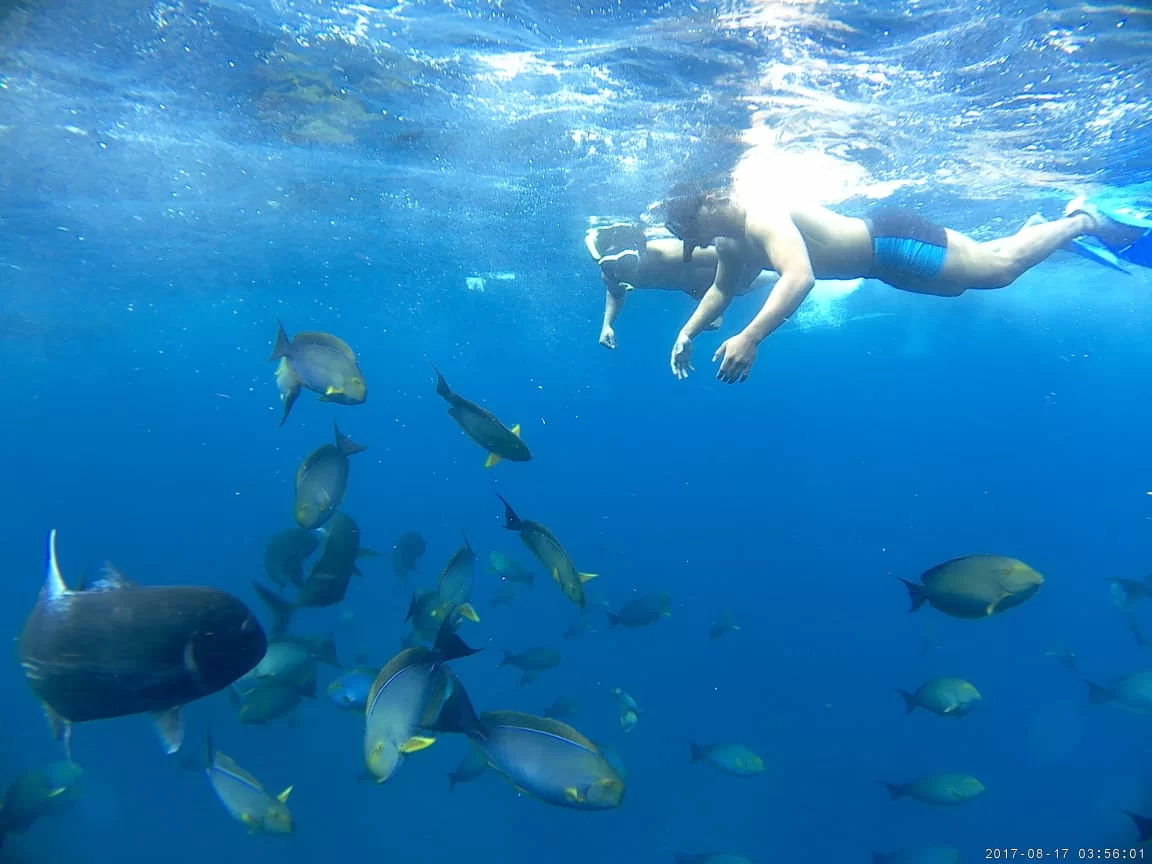
GT Point is one of the famous diving spots in Nusa Penida, Indonesia. Located on the southwest part of the island, GT Point (also known as GT Bay) is known for its abundant marine life, strong currents, and varying depths. This spot is very popular among experienced divers as it offers challenging diving experiences and spectacular underwater views.
Here is a further explanation about GT Point:
1. Location
GT Point is located on the southwest side of Nusa Penida, near other popular spots like Manta Point and Crystal Bay. This spot can be reached by boat from the main harbor in Nusa Penida, such as Toyapakeh Harbor, which takes about 30 to 40 minutes depending on sea and weather conditions.
GT Point can be accessed by boat from several local diving operators offering diving tours around Nusa Penida.
2. Unique Features of GT Point
Rich Biodiversity: GT Point offers stunning underwater views with diverse marine species, including tropical fish, coral reefs, and larger sea creatures such as manta rays and pelagic fish. This spot is often a place where large species like Mola-Mola (Sunfish) appear, especially during certain seasons (around August to October).
Strong Sea Currents: One of the main challenges at GT Point is the fairly strong sea currents. This spot is known for currents that can become quite strong, especially at deeper depths and during high or low tide movements. Therefore, GT Point is more suitable for experienced divers who can handle strong currents and maintain safety.
Beautiful Coral Reef Scenery: The coral reefs at GT Point are very diverse and healthy. There are many hard and soft corals that form a rich underwater ecosystem providing homes for various fish and other marine creatures. Underwater explorers will find many stunning coral reef formations while diving here.
3. Sea Conditions and Best Time to Visit
Strong Currents: A hallmark of GT Point is the strong currents, which can be challenging for beginner divers. These currents vary depending on time and weather conditions. Sometimes, the currents can be very strong, especially around the deeper reef walls. For this reason, GT Point is more suitable for licensed and experienced divers.
Good Visibility: The water at GT Point is usually quite clear, especially during the dry season (between April and October). Underwater visibility can reach around 20 meters or more, allowing divers to see marine life clearly.
Best Season to Visit: The dry season (April to October) is the best time to visit GT Point. During this period, the weather is more stable and the sea conditions are calmer, providing better visibility and greater chances to see Mola-Mola and other large species. However, even during the rainy season, GT Point remains a popular diving location.
4. Activities to Do
Scuba Diving: GT Point is an ideal diving spot for experienced divers. With depths varying between 15 to 40 meters, GT Point offers challenging diving experiences with incredible underwater views. Divers can see a variety of marine life, including large pelagic fish, beautiful coral reefs, and occasionally Mola-Mola.
Snorkeling: Although better known as a diving spot, GT Point can also be used for snorkeling, especially in shallower areas. However, due to the fairly strong currents, snorkeling is recommended only in safer, shallower zones and with local guide supervision.
Deep Diving: GT Point is perfect for divers wanting to explore deeper depths and see larger marine life such as manta rays and pelagic fish. Some experienced divers also get the chance to see Mola-Mola (Sunfish) here, especially during August to October, the best season to see this species.
5. Safety and Preparation
Sea Currents: Considering the strong currents at GT Point, it is very important to dive with an experienced local guide. They will guide divers to ensure safety, help handle strong currents, and ensure the diving trip runs smoothly and safely.
Diving Experience: GT Point is more suitable for divers with experience, given the strong currents and varying depths. If you are still a beginner, it is better to choose other spots that are calmer and shallower.
Diving Equipment: To dive at GT Point, make sure to bring complete diving gear, including mask, oxygen tank, regulator, and buoyancy control device. Because of the strong currents, make sure to use equipment that is safe and suitable for GT Point’s conditions.
6. Facilities Nearby
Boat Access: GT Point can only be accessed by boat from the main harbor in Nusa Penida. Many local diving tour operators offer packages to dive at GT Point. Some tours include equipment and licensed guides.
Accommodation: There are various lodging options around Nusa Penida, ranging from homestays to three-star hotels. Most accommodations are located near the main harbor or busier areas such as Toyapakeh or Crystal Bay. However, you can also find quieter places to stay around GT Point.
7. Tips for Visitors
Bring an Underwater Camera: If you are an experienced diver, be sure to bring a waterproof camera to capture the underwater beauty. GT Point offers very rich views with diverse tropical fish and stunning coral reefs.
Check Weather and Sea Conditions: Before leaving, be sure to check the weather and sea conditions. Given the strong currents, it is very important to ensure the sea is safe for diving.
Choose the Right Time: If you want to see Mola-Mola or other pelagic fish, visit GT Point between August and October, which is the best season for these large species.
8. Additional Attractions
Besides the amazing diving experience, GT Point also offers spectacular views from above the water. Visitors can enjoy the beautiful and mesmerizing scenery of Nusa Penida by boat.
GT Point is one of the challenging and interesting diving spots in Nusa Penida. With strong currents and varying depths, this spot is more suitable for experienced divers seeking challenges and rich underwater beauty. If you are looking for a deeper diving experience with chances to see large species like Mola-Mola, GT Point is the right choice.